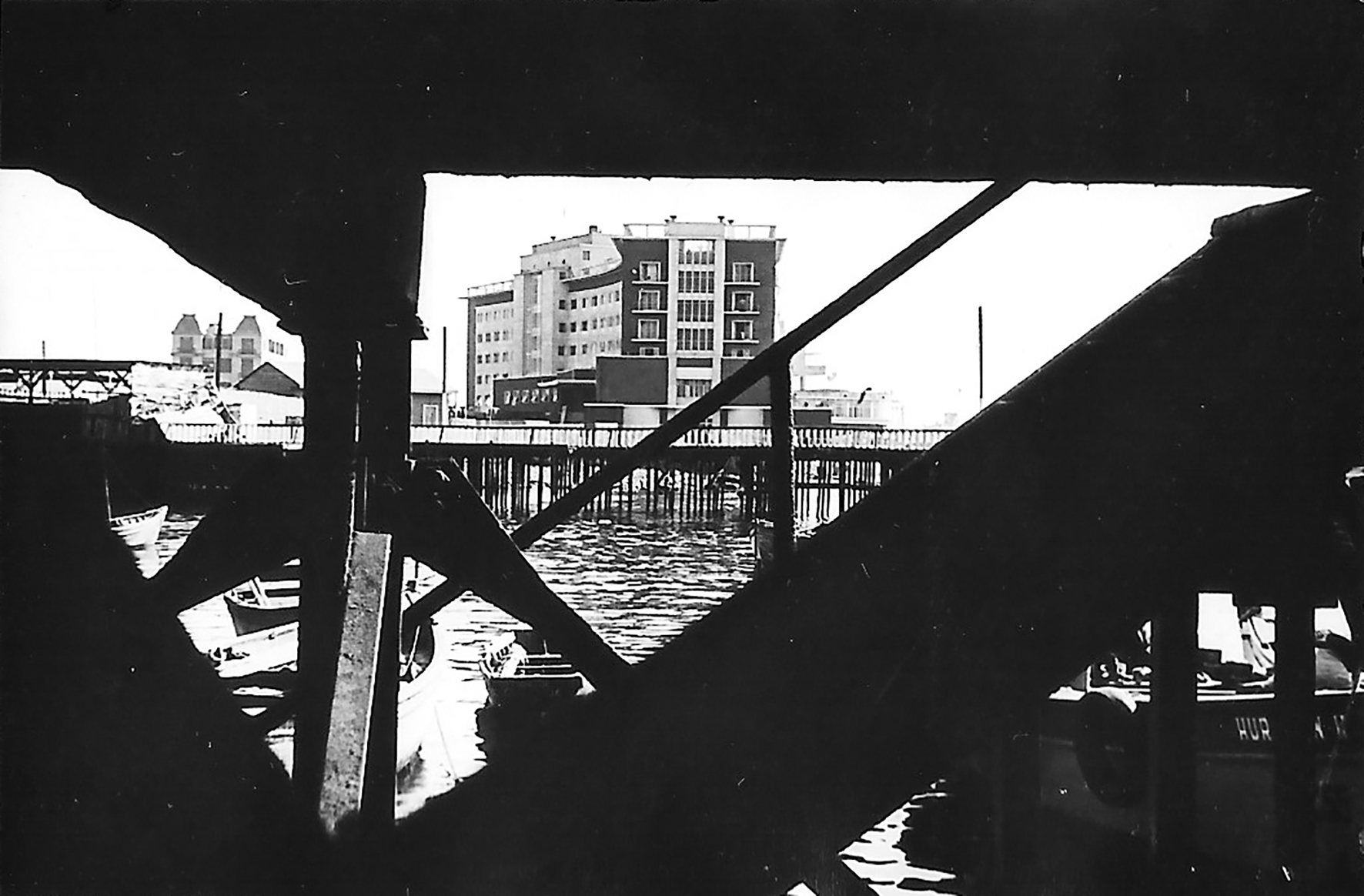Author ········· Edgar Allan Poe
Medium ········· Print
Published ······ July 1845
Language ······· English
Medium ········· Print
Published ······ July 1845
Language ······· English
FEDERICO WAELDER SANDER
(Stuttgart, Germany, 09-12-1918 – Antofagasta, Chile, 23-07-1989)
– Camilo Araya Fuentes
His passion for music started at an early age and in a prominent way. At only sixteen years old, Friedrich Wälder began attending piano classes taught by prestigious jazzman Charlie Kunz in Luxembourg, where Kunz had arrived a decade earlier to become an important figure in dance bands, characterized by their expressive rhythms and melodies in the swing era.
After finishing his studies under Kunz, which lasted three years, Wälder forms the group “Seven of Golds’’ and goes on tours around southern Germany until he is captured by SS forces in the tragic Night of Broken Glass, after which he is sent as a prisoner to the Welzheim concentration camp, 30km east of his hometown of Stuttgart, where he remains captive from November 1938 until February 1939. He survives the nazi horror and manages to escape: in April of the same year, he marries Viktoria Behar, with whom he embarks from Génova to Santiago de Chile in the Conte Grande, which reaches the port of San Antonio on Monday 13th of November. He leaves behind his music sheets and his surname’s umlaut, his name now being Federico Waelder.
In the Chilean capital, he works as an experimental soloist in radio stations: Carrera, Cooperativa Vitalicia, Prat, Minería, among many others… His first daughter is born around this time, Victoria Gloria, with the hope that “her name will be prophetic for democracies”, as he points out in an interview. He joins the jazz scene of Santiago as a pianist in nightclubs: Jai Alai, La Quintrala, and the luxurious Casanova, where he plays alongside drummer Tulio Aguayo. With Odeón, a record label, he records at least 10 discs, among them an experimental potpourri of creole music: Chilean Rhapsody. He stands out with his performances and his name gains popularity, appearing in music magazines like Ecran and Radiomanía. In their pages, we read about Federico’s influence: Backhaus, Carmen Cavallero, Philadelphia Orchestra, and Benny Goodman’s sextet, as well as Stokowski. We also know that he experimented with a vibraphone and that in the year ‘52 he performed with guitarist Wilo Gamboa in Hotel Carrera.
One year later, he travels to the north of the country to be hired as a permanent musician and orchestra director in the Hotel Antofagasta, an icon of architectonic modernity in that city, during the inauguration of which, the 14th of November of ‘53, he presents himself along with his lady crooner, Elly Morgan, and drummer Elías Valenzuela Rengifo, orchestrating the dance that night. Elly was coupled with Federico, both affectively and musically, joining the Federico Waelder Trio along with Eduardo Soza, in a spectacle that includes humor and even illusion magic.



However, music was not Waelder’s only passion, who is also remembered as a remarkable photographer in Antofagasta, a city he explored, camera in hand, on a scooter or on board of his “red jewel”, a Crosley Hotshot, capturing the faces of its inhabitants, incandescent nights, and new buildings of a city with a great social, cultural and architectonic activity.
Universities open, the Regional Stadium is built, the centenary is celebrated, industrial and artistic exhibits are made, the latter in the famous Sala Ercilla or in Nortelibros, stages of the “golden age” of Antofagasta’s visual arts; and in the middle of it all, Waelder’s lens documenting the modernization of the old saltpeter port.
We know from his colleagues that in the field of photography he would follow the same principles he did in the field of music, with experimentation and rigorousness being the methods he used in his laboratory to obtain the tonalities he was looking for. As proof of this, the photographic exhibit he did in 1963 in Radio Minería de Antofagasta’s hall, the radio station where that same year he started his show “El laboratorio sonoro”, space dedicated to jazz and conversations about parapsychological and extrasensory themes, another of his constant inquiries.
Some years later, his photographic works are included in the book Salar by poet Ernesto Murillo, published in 1966 by the Instituto de Literatura Nortina de la Universidad de Chile-Antofagasta, whose edition combines poetry and photography - not only by Waelder but by other photographers as well: Emile de Bruyne, Sofía Sayago, Carlos Tapia and Murillo himself.
We also see through his lens some portraits of Chilean jazz masters: Giovanni Cultrera, Daniel Lencina, Federico Ojeda, Lucho Córdova, among others, with whom he maintained a friendship as they would often visit him in his northern city. There, Waelder and Elly Morgan would meet with their friends for evenings and nights of jam-session, where among others, trumpeter Hernán Astudillo, saxophonist “Mike” Mardones, contrabass player Ismael Torres and drummer Juan Yutronic, in some cases recording for Antofagasta’s Jazz Club, organized by Astudillo, a fraternity of music lovers that managed to create an interesting musical heritage.
Remembered still is Disparos del Obturador, a radio segment in which Waelder would dissect relevant topics in his country at the time, or some aspect about mankind’s daily life, in the channel Radio Minería, with a written version published in La Estrella del Norte, and occasionally in El Mercurio de Antofagasta, under the pseudonym Obturador (Shutter) or the mysterious Doctora Isabel Flagra.
Federico Waelder Sander, a pianist who escaped from Nazi Germany, entertainer of everlasting nights of jazz in the bohemian scenes of Santiago and Antofagasta, photographer of modernity, radio announcer, and newspaper columnist, died at 13:15 hours, on the 23rd of July of 1989 in the Regional Hospital of Antofagasta. He leaves behind an invaluable legacy: his audio library, hundreds of photos and films, part of a bigger archive yet to be discovered.
